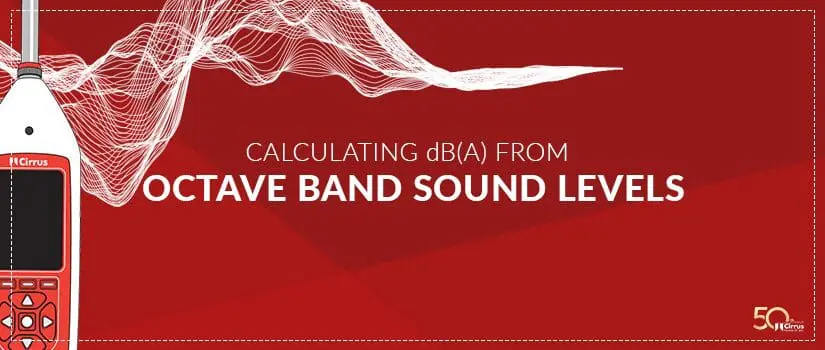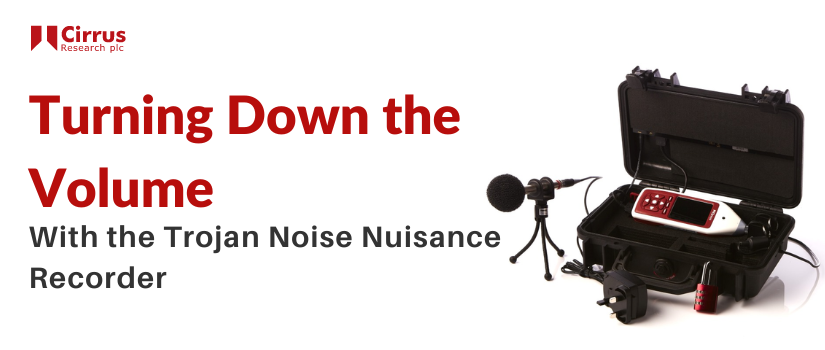We often get asked whether it’s possible to calculate the overall dB(A) value from a set of 1:1 octave band data values. The short answer is yes, but there are a few things to consider, in terms of how the data has been measured and what it is being compared to.
Firstly, the octave band data values should have been measured at the same time using a real-time octave band sound level meter, such as the Optimus Industrial, or Optimus Environmental instruments. If this isn’t the case, then the comparison between the overall LAeq and the calculated values should be done with caution.
Secondly, the octave bands have been measured as Leq (rather than sound level). This is important as it allows us to gather all the noise energy together to calculate overall dB(A) value.
The third thing to consider is that the data gathered by the octave bands is not the same as that used to calculate the overall dB(A) value in the sound level meter. The calculation of the LAeq in a sound level meter uses an A-weighting filter that spans from 10Hz to 20kHz, whereas the octave band filters may only cover centre frequencies from 63Hz to 8kHz. If the noise measured contains significant amounts of noise outside of these bands, the calculated values can be significantly different to the measured values.
What do we need?
We need the values of each of the octave bands, ideally from 31Hz to 16kHz, and we need to know if these have been frequency weighted in any way.
The best way to measure 1:1 or 1:3 octave bands is to not use any frequency weighting then to apply the corrections after the measurement. This avoids any issues with overload or under-range in the instrument during measurement, which was often an issue with older sound level meters. Modern sound level meters, such as the Cirrus Optimus instruments, have a dynamic range in excess of 120dB, so this type of error is much less common.
We also need to know the corrections for A-weighting at each of the frequencies for which we have data.
An example calculation
Below are the noise levels, measured as LZeq or Leq dB(Z) by the optimus sound level meter:
| Frequency (Hz) | 31.5 | 63 | 125 | 250 | 500 | 1kHz | 2kHz | 4kHz | 8kHz | 16kHz |
| Level (dB) | 70.9 | 78.4 | 83.3 | 87.6 | 87.3 | 93.5 | 93.8 | 97.0 | 99.9 | 98.2 |
The next step is to add the A-weighting corrections to the measured levels:
| Frequency (Hz) | 31.5 | 63 | 125 | 250 | 500 | 1kHz | 2kHz | 4kHz | 8kHz | 16kHz |
| A-Weighting Correction (dB) |
-39.4 | -26.2 | -16.1 | -8.6 | -3.2 | 0 | 1.2 | 1 | -1.1 | -6.6 |
| Level (dB) | 70.9 | 78.4 | 83.3 | 87.6 | 87.3 | 93.5 | 93.8 | 97 | 99.9 | 98.2 |
| Result (dB) | 31.5 | 52.2 | 67.2 | 79 | 84.1 | 93.5 | 95 | 98 | 98.8 | 91.6 |
Now we need to take each of the resulting values and do a calculation on each one. Firstly we need to divide each value by 10 and then anti-log each value. The simplest way to do this is to use the formula 10 ^(L/10) where L is the value in each cell.
Now we add all of these values together, log this value and multiply it by 10 to give the final dB(A) value.
These steps allow us to calculate the overall dB(A) value of this noise measurement and the value that we end up with is 103.2dB(A).
This is the same as the overall LAeq value that the optimus sound level meter measured.
If you’d like to know more or if you have a question that you’d like answering feel free to drop us an email!



